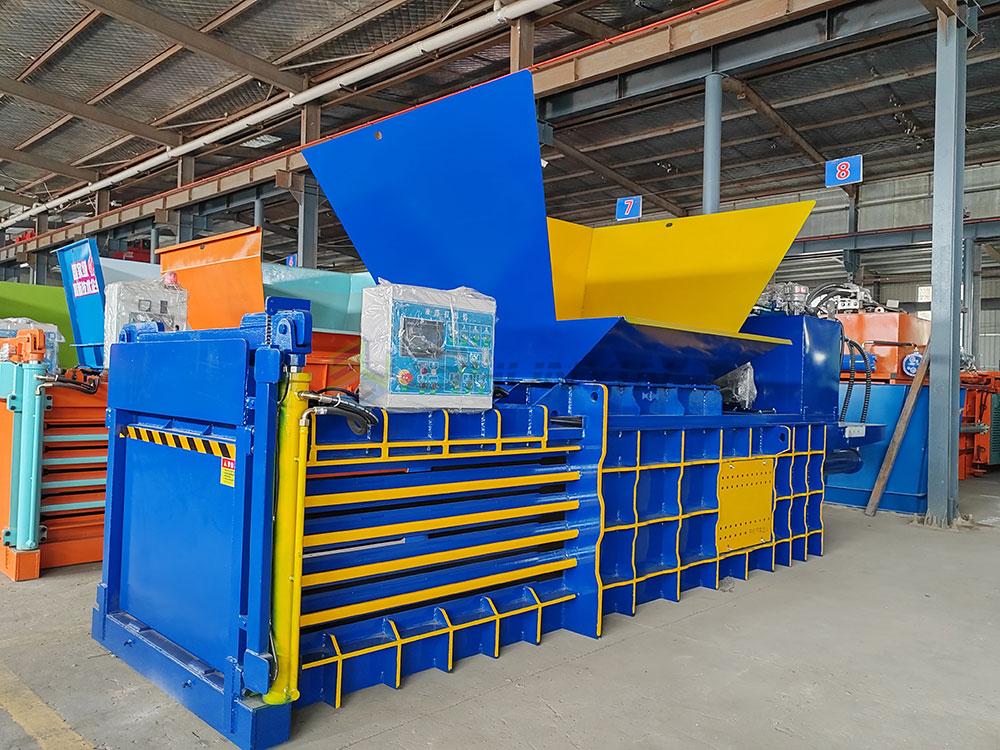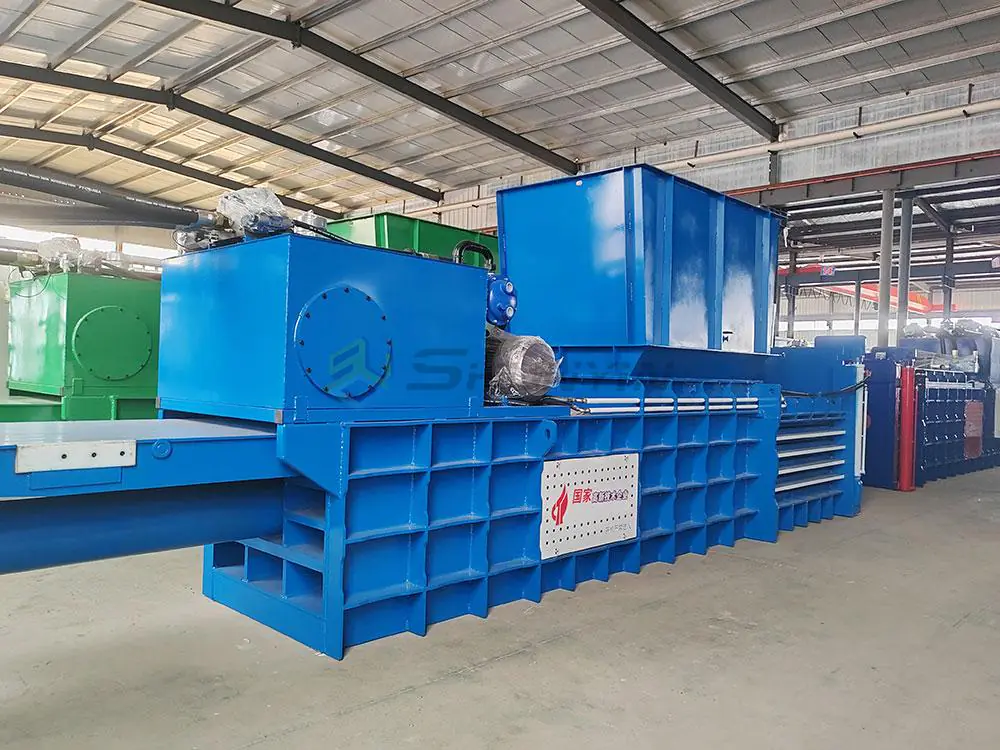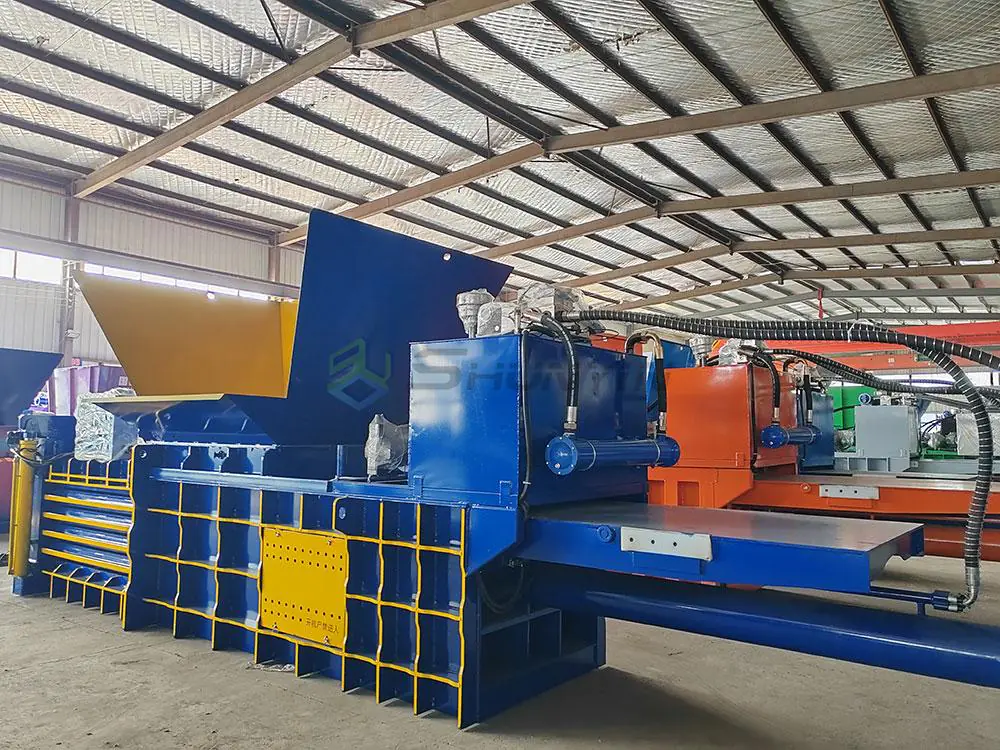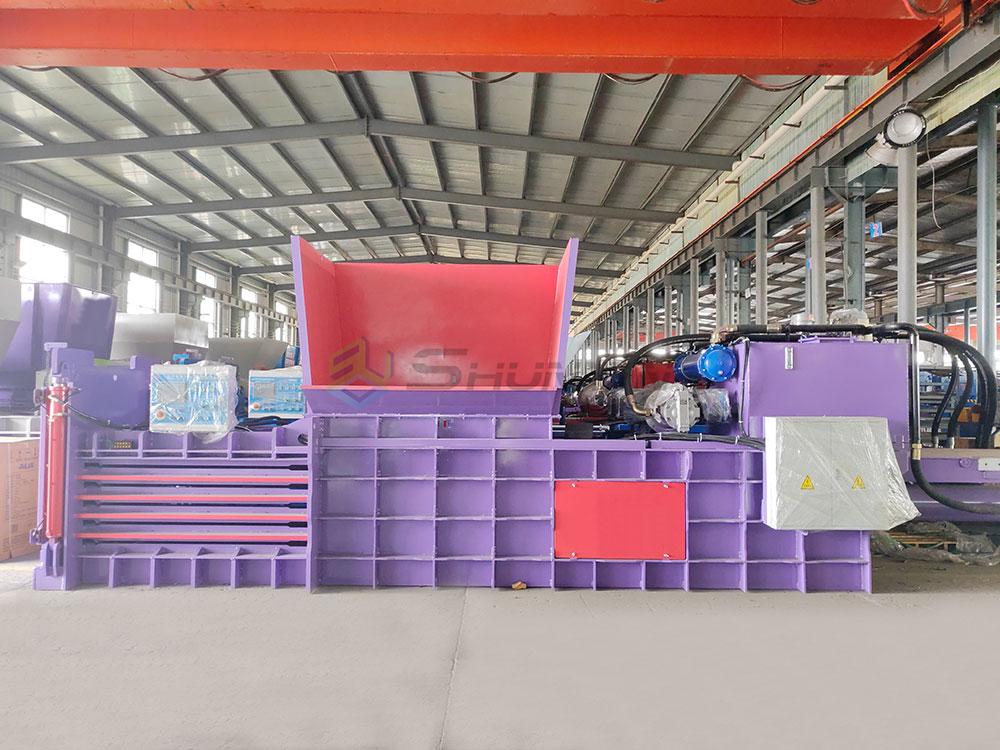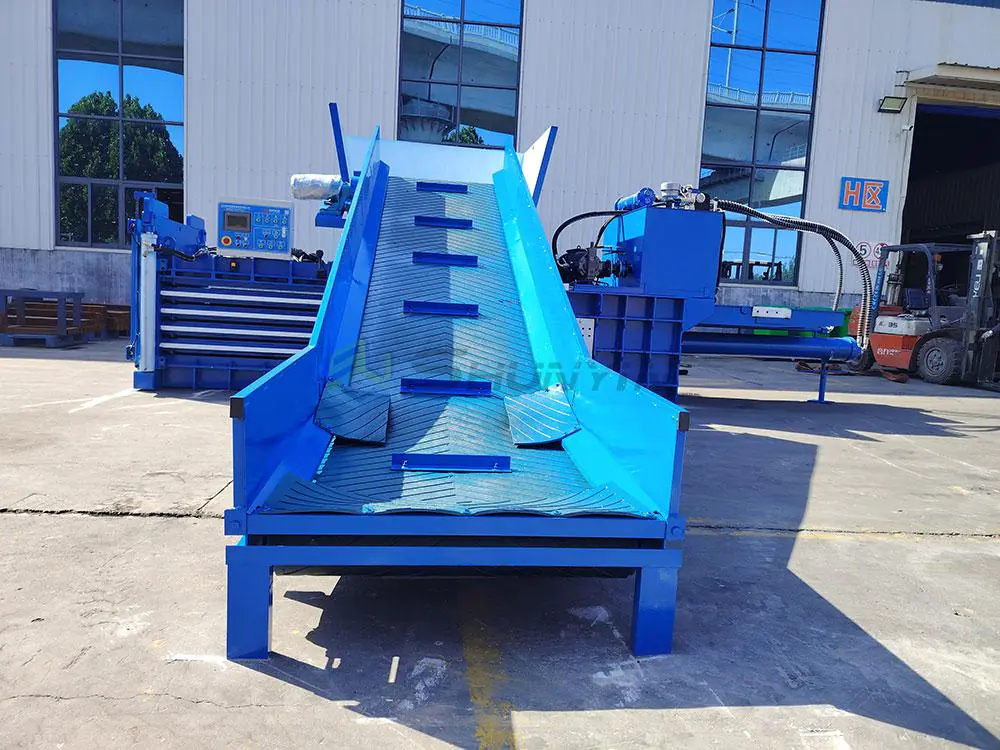
Saudi Binladin Group’s new twin-ram systems process 28 tons/hour of concrete formwork waste into 1,100kg/m³ bales – achieving 93% landfill diversion rates while qualifying for 16% VAT rebates under ZATCA’s green initiative.
Dual-ram hydraulic balers achieve 47% higher bale density than single-ram models through sequential compression cycles. The HB-Q8 dual-ram system reduces power consumption to 0.18kWh/kg via counter-balancing force recovery technology – vital under Saudi Arabia’s 0.49 SAR/kWh industrial energy pricing.
Discover compression dynamics redefining Middle Eastern waste economics.
What Is a Baler in Waste Management?
Saudi Arabia’s waste revolution
Density Benchmarking (2024 Data)
| Material Type | Loose Bulk Density | Baled Density | Compaction Ratio |
|---|---|---|---|
| Steel Scrap | 780kg/m³ | 1,980kg/m³ | 2.54x↑ |
| PET Bottles | 48kg/m³ | 615kg/m³ | 12.8x↑ |
| Demolition Debris | 1,230kg/m³ | 2,710kg/m³ | 2.2x↑ |

Operational Triumphs
Jeddah Port Waste Hub:
- Processes 1,400 shipping container wrappers daily
- Achieves 99.3% non-ferrous metal recovery
- Cut vessel loading time from 8h→47min
Key Saudi Standards Compliance:
✓ SASO 3402 energy recovery protocols
✓ MODA IoT reporting frameworks
✓ MOL 2418 operator safety mandates
What Is a Two Ram Baler?
Engineering breakthrough decoded
Dual-Pressure System Architecture
| Component | Primary Ram | Secondary Ram | Synergy Effect |
|---|---|---|---|
| Force Range | 300-850kN | 150-600kN | Adaptive staging |
| Speed | 0.8m/s | 1.6m/s | 2x faster reset |
| Energy Source | Main hydraulic pump | Regenerative circuit | 31% consumption↓ |

Material-Specific Advantages
Heavy Steel Waste:
- First Ram: Pre-compresses to 590kg/m³
- Counter Plate: Aligns irregular edges
- Second Ram: Final pressurization to 1,150kg/m³
Film Plastic Handling:
- Inter-stage vibration settling
- Integrated moisture injection (up to 15L/min)
- Anti-static ionizers
Saudi Success Case:
- Yanbu Industrial City reduced scrap export costs by 61%
- Achieved 98.4×1.2×0.8m ISO container optimization
- Complies with IMDG Code Amendment 41-22
How Does a Hydraulic Baler Work?
Power transmission mastery
5-Phase Operation Cycle
-
Feed Optimization
- Load cells measure incoming material weight (±2kg)
- Auto-rejects >45% moisture content
-
Interlinked Pressurization
| Stage | Pressure (kN) | Duration | Energy Use |
|---|---|---|---|
| Primary Compression | 780kN | 9.8sec | 38kWh |
| Material Settling | 180kN | 4.2sec | 9kWh |
| Secondary Compression | 950kN | 12.1sec | 42kWh |

Hydraulic Fluid Dynamics
- Variable Displacement Pumps: Adjust flow from 18L/min→240L/min
- Accumulator Banks: Store 12.8MJ regenerative energy
- Thermal Management: Maintain oil temp at 52±3℃ in desert heat
Madina Scrap Yard Results:
- 23% higher daily throughput vs single-ram models
- 66% reduced hydraulic hose failures
- Met BS EN 16281:2023 safety thresholds
What Is the Difference Between Single Ram and Dual Ram Baler?
Strategic selection matrix
Performance & Cost Analysis
| Parameter | Single Ram | Dual Ram | Advantage Factor |
|---|---|---|---|
| Max Force | 920kN | 1,240kN | 35% ↑ |
| Cycle Time | 34sec | 26sec | 31% ↓ |
| Daily Output | 460-530 bales | 680-710 bales | 47% ↑ |
| Total Ownership Cost | SAR 1.2M/5years | SAR 1.05M/5years | 13% ↓ |

Case-Based Decision Guide
Choose Single Ram When:
- Processing uniform materials (OCC paper/textiles)
- Operating budget under SAR 840,000
- Space constraints below 6.5m x 4m
Dual Ram Superiority:
- Handles mixed construction/demolition waste
- Requires >85% bale density consistency
- Processes over 22 tons/day
Riyadh Recycling Center Data:
- 121% ROI increase after upgrading to dual-ram
- Reduced wire tie usage by 62%
- Enabled export to EU under EN 643:2023
Conclusion
Saudi Operators Must Demand:
1) Minimum 630L/min hydraulic flow rate
2) SASO 2798-2024 safety certifications
3) Bilingual (Arabic/English) fault diagnostics

Verification Protocol:
☑️ 200-cycle continuous stress test
☑️ 53℃ ambient temperature operation validation
☑️ 2.1% maximum hydraulic leakage tolerance
Installation Strategy:
- Conduct NFPA 79 electrical compliance audit
- Train staff on ISO 12100 risk assessment
- Integrate with MODA’s FMMS platform
Critical Maintenance Targets:
- Replace HNBR seals every 1,100 operating hours
- Clean heat exchangers every 340 cycles
- Recalibrate load cells monthly (±0.4% error)
Pro Tip: Insist on viewing third-party test reports for accumulator endurance – 59% of hydraulic failures originate from improper gas pre-charge levels. Demand SABER-certified PLC controls for Saudi market compliance.


